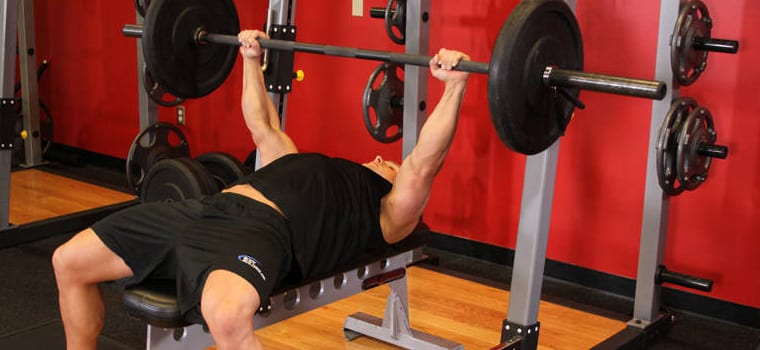Having trouble adding weight to your Bench Press? You’re not alone. After you’ve been lifting for awhile, you’re bound to hit a point where your gains grind to a halt.
Your first inclination might be to bench press more than you already do—which is probably too much already if you’re like most people. Or maybe you feel the need to totally overhaul your workouts to get out of your rut.
In actuality, neither of those options is the best way forward. Instead, find the weakness in your Bench Press and start hammering away at it to unlock new strength on what’s likely your favorite lift.
According to Rick Scarpulla, owner of Ultimate Advantage Training, most athletes fail to get stronger on the Bench Press because of a lack of reversal strength.
Think of reversal strength as like a trampoline. If you lack it, you won’t be able to decelerate the bar as it nears your chest and then drive it up with speed. Without sufficient bar speed out of the bottom of the press, you’ll get stuck about halfway up on the lift.
One of Scarpulla’s solutions for improving reversal strength on the Bench Press is what’s called the No-Block Block Press.
Weird name, right? Bear with me for a moment and you’ll understand the reasoning behind it.
During a traditional Block Press (also referred to as a Board Press), a partner places one or more 2×4 boards on your chest, which limit how far you can lower the bar. This allows you to lift more weight because the bar covers a shorter distance, and strengthen specific ranges of motion in the press.
The No-Block Block Press uses the same abbreviated range of motion as a Block Press, but without the block (hence the name). It’s up to you to stop the bar above your chest, pause briefly and then explode up.
Stopping the bar a few inches above your chest and pausing is tough—you’ll only be able to use about 75-85 percent of the weight you typically lift. However, it’s an incredibly effective method for enhancing reversal strength.
Scarpulla says that this type of press forces you to use your lats (large back muscles under your armpits) and rear delts (back side of your shoulders) to stop the bar and control the pause. This strengthens those muscles and teaches you to use them during a press, which improves your reversal strength.
“Because you can decelerate the bar easier, you’re then able to drive the bar off your chest faster, which ultimately will help you lift more weight,”
he says.
So how do you add this exercise to your workouts? It’s simple. Here are Scarpulla’s guidelines for performing the No-Block Block Press and shattering your Bench Press PR.
- Perform the No-Block Block Press no more than once per week and on non-consecutive weeks. Never do it after heavy sets of Bench Press.
- Master the Bench Press setup, for which you can find a demonstration from Scarpulla here.
- Lower the bar as you normally would during the Bench Press and pause four inches above your chest. Do not allow your elbows to flare out.
- Explosively drive the bar up from the pause position.
- Perform 4-5 sets of 3-5 reps.









